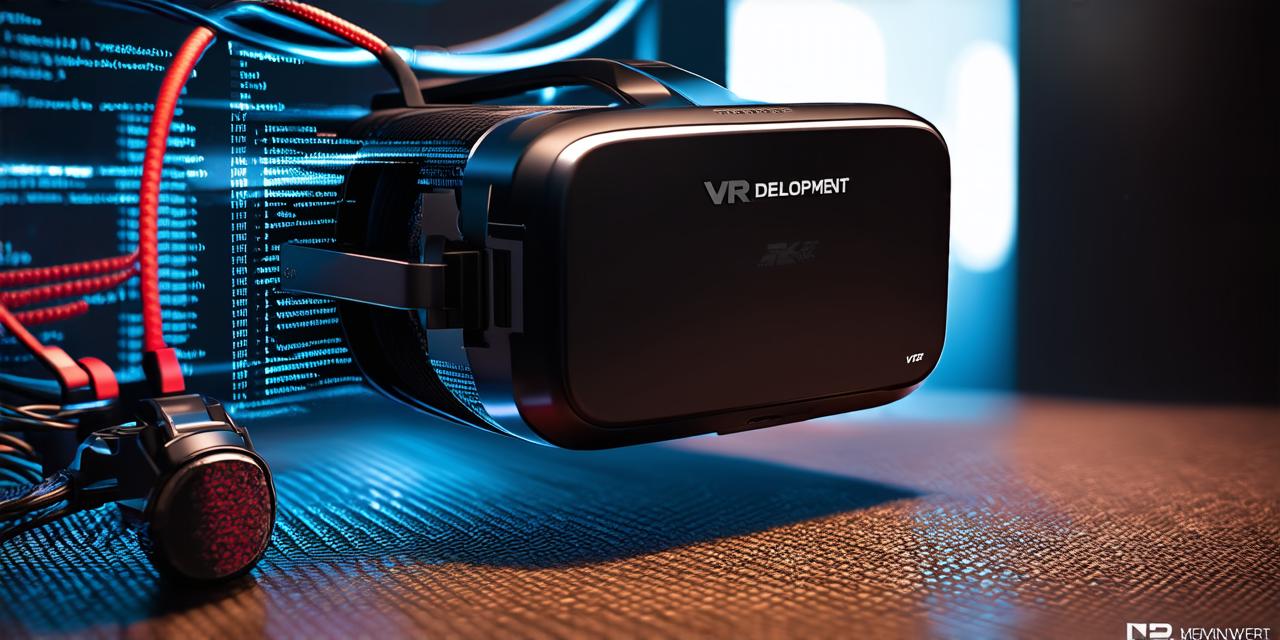<!DOCTYPE html>
What is VR Development?
Virtual reality development involves creating immersive experiences that engage users in a three-dimensional environment. The technology uses sensors and headsets to track user movements, allowing them to interact with virtual objects and environments in real time. VR development requires knowledge of programming languages such as C++, Java, and Unity, as well as 3D modeling and design skills.
Why Develop a VR Application?
There are many reasons why businesses might choose to develop a VR application. For example, they can be used for training employees in hazardous environments, such as construction or healthcare, without the need for physical presence. VR applications can also be used for product visualization and prototyping, allowing designers to test their ideas before investing in costly manufacturing processes. Additionally, VR applications can be used for entertainment purposes, such as creating video games or immersive experiences for theme parks and museums.
What Tools Do You Need?
To develop a VR application, you will need several tools:
- Development Kit: This is the software that allows you to create and test your VR application. Examples include Unity, Unreal Engine, and SteamVR.
- Headset: The headset is the device that users wear to experience the VR environment. There are several options available on the market, such as Oculus Rift, HTC Vive, and PlayStation VR.
- Computer: You will need a powerful computer with a graphics card to run your development kit and application.
- 3D Modeling Software: This is used to create the 3D models of objects and environments that users will interact with in the VR environment. Examples include Blender, Maya, and Autodesk 3ds Max.
Getting Started: Creating Your First VR Application
Step 1: Choose a Development Kit
The first step is to choose a development kit. Unity is one of the most popular options for beginners due to its ease of use and wide range of features. Other options include Unreal Engine, which is more advanced but offers better performance, and SteamVR, which is specifically designed for PC gaming.
Step 2: Choose a Headset
Next, you will need to choose a headset. Oculus Rift is one of the most popular options due to its compatibility with both Windows and Mac computers, as well as its large library of games and applications. HTC Vive is another option that offers better performance but requires a more powerful computer. PlayStation VR is designed for use with the PlayStation 4 console and is ideal for gaming.
Step 3: Set up Your Development Environment
Once you have chosen your development kit and headset, you will need to set up your development environment. This involves downloading and installing the software on your computer, as well as configuring your headset to work with your computer.
Step 4: Create Your VR Application
With your development environment set up, you can start creating your VR application. The first step is to create a basic scene using 3D modeling software. This includes adding objects such as walls, floors, and ceilings, as well as designing the layout of the environment.
Next, you will need to integrate your VR development kit into the scene. This involves creating scripts that control user movement and interaction with objects in the environment. You can also add features such as audio, lighting, and textures to enhance the experience.
Step 5: Test Your Application
Once you have completed your VR application, it is important to test it on your headset to ensure that it works correctly. This involves running the application and experiencing it in a three-dimensional environment. You may need to make adjustments to the application based on feedback from users or issues that arise during testing.
Step 6: Publish Your Application
If you are planning to distribute your VR application, you will need to publish it. This involves uploading the files to a platform such as Steam or Oculus, where users can download and play the application.
Conclusion: The Future of VR Development
<p
